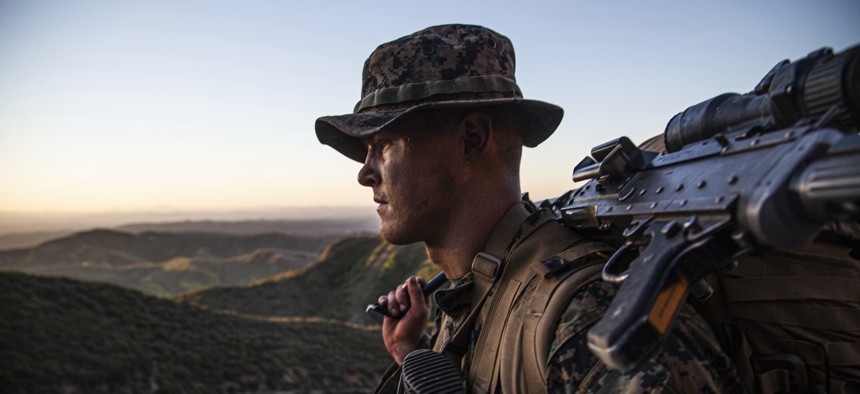
The Marine Corps is honing its plans for smaller, tech-heavy infantry battalions through two years of experimentation intended to reveal the best mix of people and capabilities for the distributed operations of the future.
“Nothing of this scale has been attempted in, certainly, decades,” said Brig. Gen. Benjamin Watson, the commanding general of the Marine Corps Warfighting Laboratory/Futures Directorate and the vice chief of the Office of Naval Research.
Dubbed Infantry Battalion Experiment Campaign Plan, or IBX30, the three-battalion effort is part of the Corps’ push to reorganize for conflicts with near-peer adversaries by 2030, which the current defense strategy says will require spreading forces across larger battlespaces while fending off new technologies like drones and cyber attacks.
“As we've seen in lots of recent conflicts, the proliferation of long-range weapons and sensors and things like that make it very challenging to survive on the current battlefield if you are a large unit that's operating in—--with large groups of people very close to each other. So you need to be able to disperse and distribute your forces and still achieve effects,” Watson said in an interview.
The current battalion with three rifle companies, a weapons company with crew-served weapons such as machine guns, and a headquarters company is not organized and equipped for future distributed warfare, he said.
A proposed infantry battalion design would eliminate the weapons company and train Marines in rifle companies to use a range of weapons instead of specializing in just one. The idea is that a smaller unit with more weapons training will increase their survivability and mission capabilities as part of a Marine Expeditionary Unit, Marine Littoral Regiment, or Infantry Regiment.
IBX30 is testing out this proposed redesign with three real infantry battalions, each one trying out the design in a slightly different way. The experiment, overseen by the Warfighting Laboratory/Futures Directorate, started late last year and will continue until 2022 when it plans to present recommendations to Marine Corps Commandant Gen. David Berger.
“Our recommendation may be one of the three, or more likely it'll be some combination that is different from any of the three, but takes into account what we've learned from experimenting with all three,” said Watson.
The idea for a reshaped infantry battalion goes back to Berger’s 2019 planning guidance, which called for a force that can move from the sea to the land, within range of long-range fires, and fight with more advanced weapons that do not require as many people in a single area.
From this planning document, a team was established to come up with a design to present to Berger. They proposed that a future battalion should be “lighter, more maneuverable and with enhanced command and control, lethality, sensing, sustainment, and capabilities to operate in the information environment,” a Marine Corps Gazette article said in February. The unit would also have fewer Marines, which will require the battalion to be “better educated, trained, and equipped.”
No comments:
Post a Comment